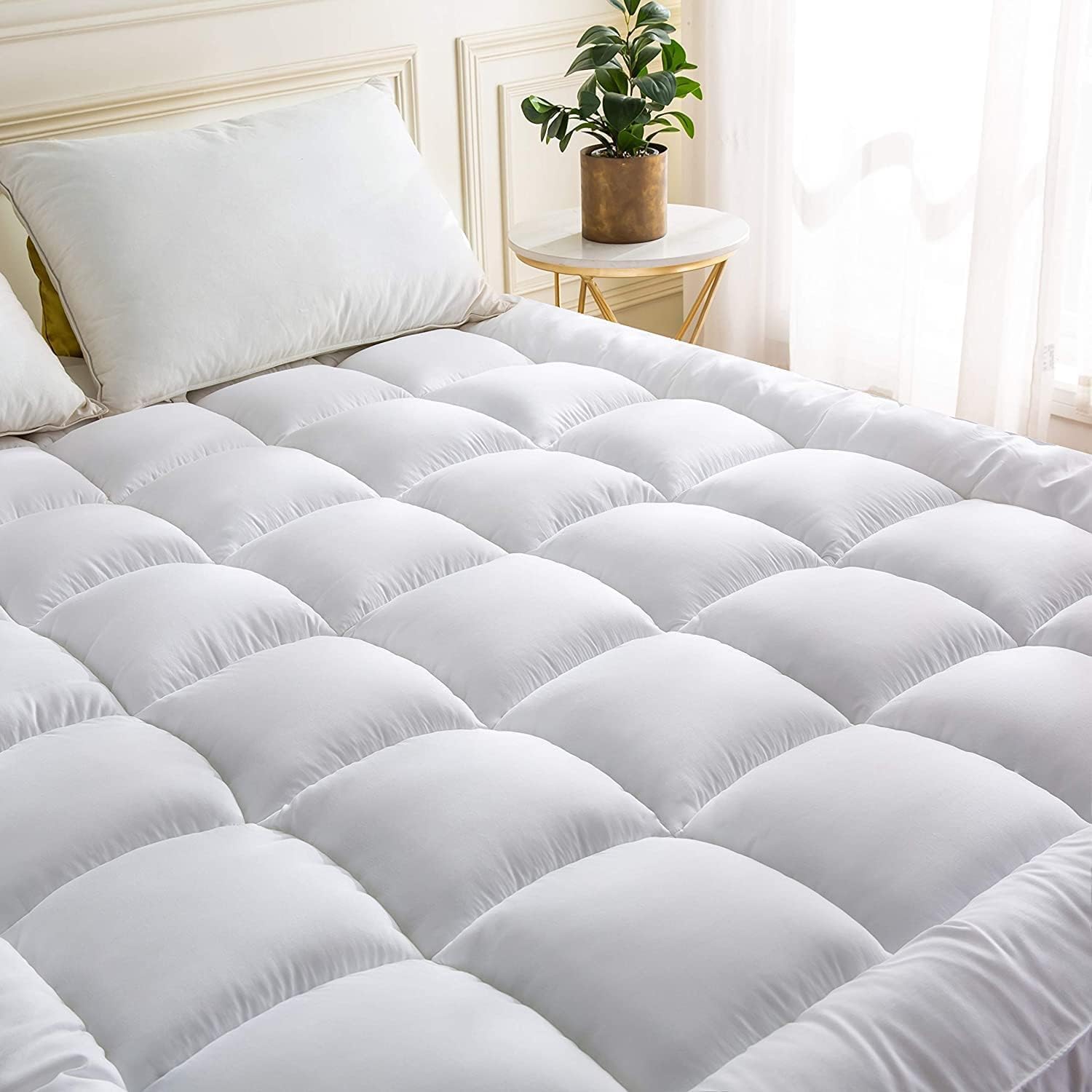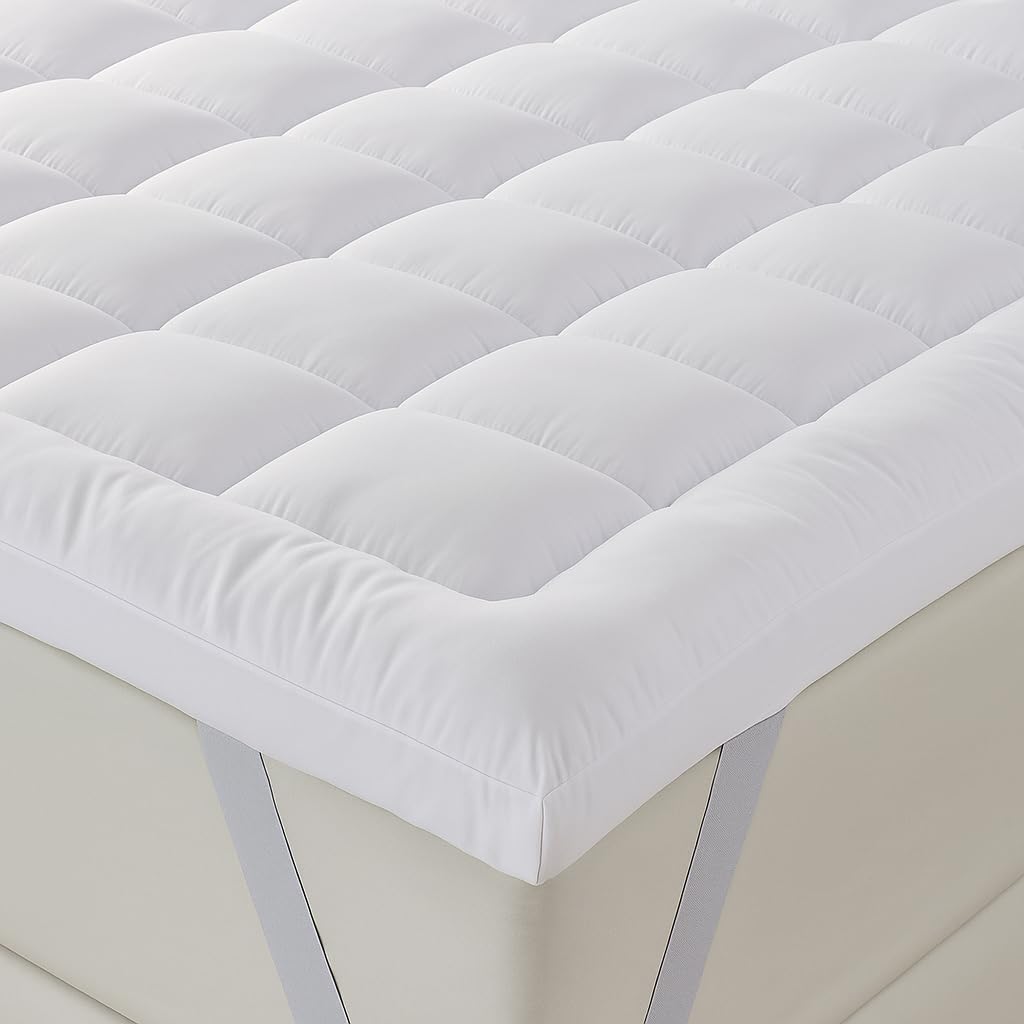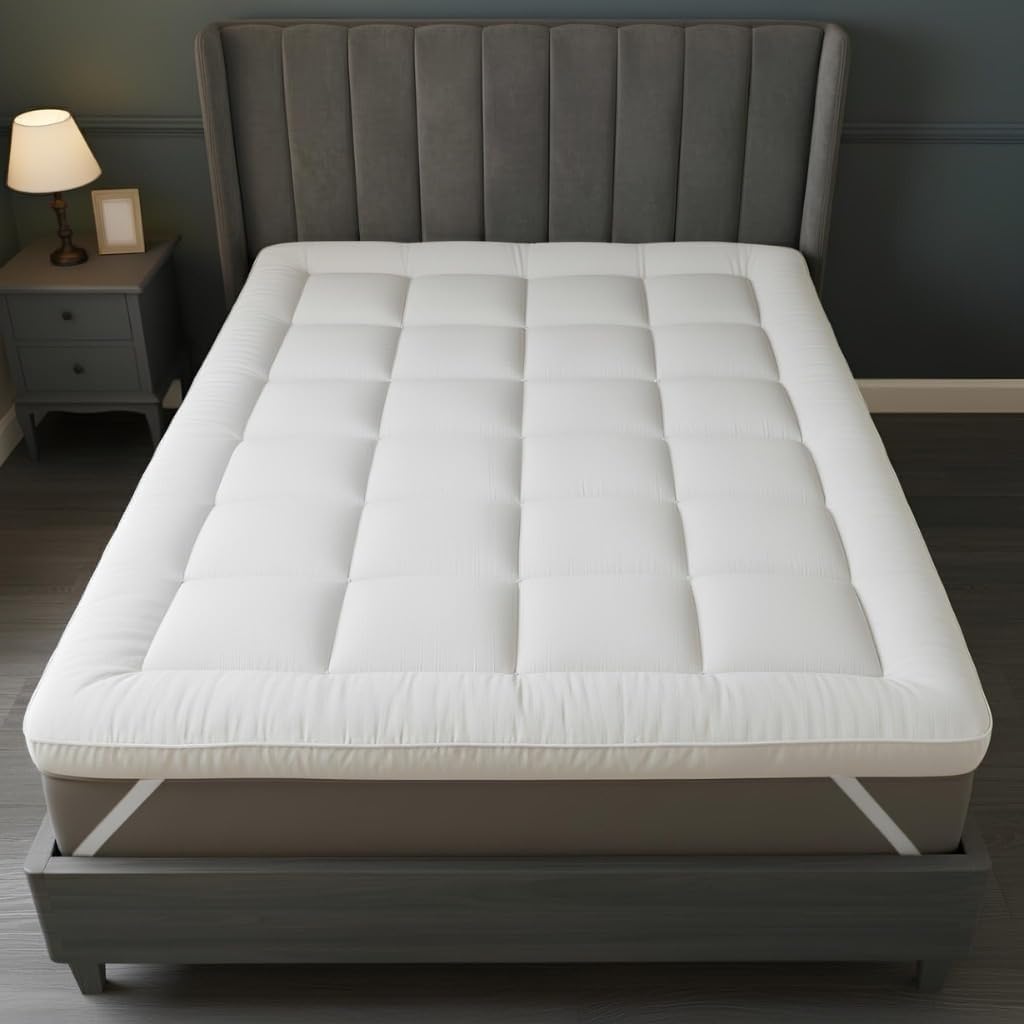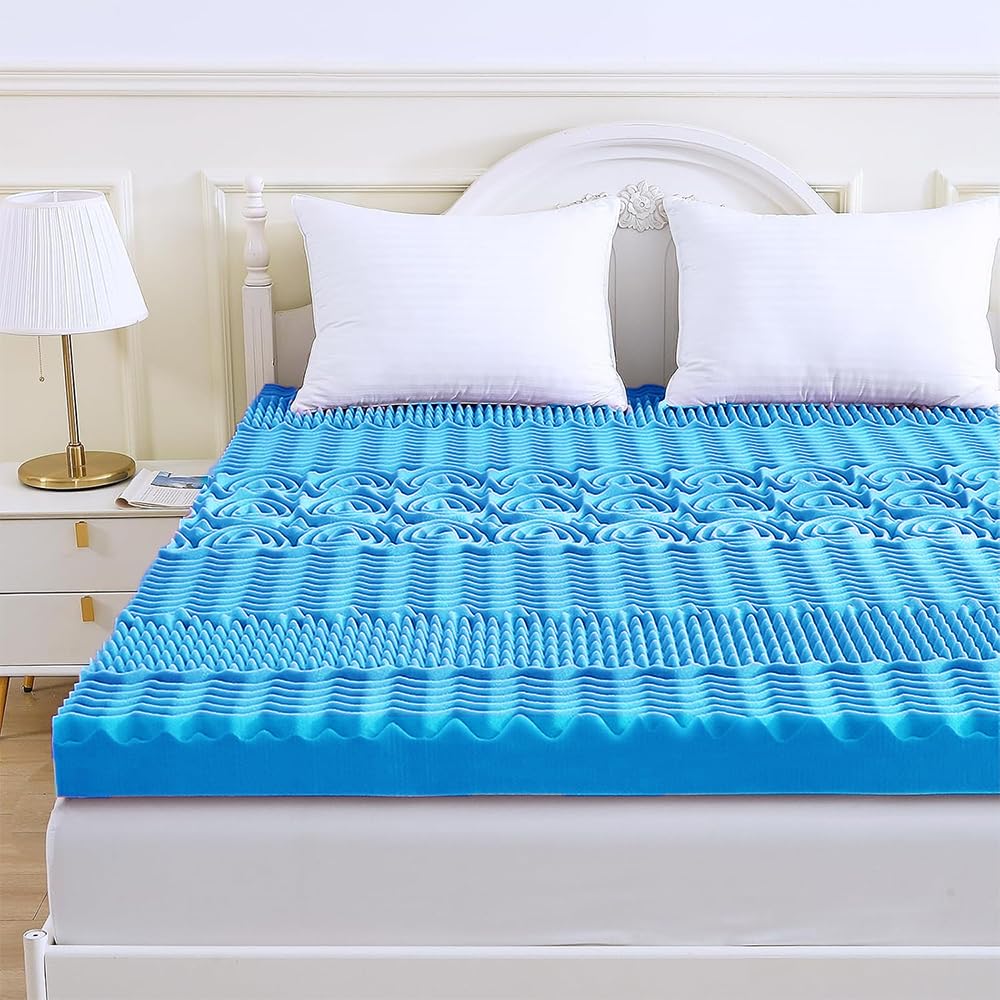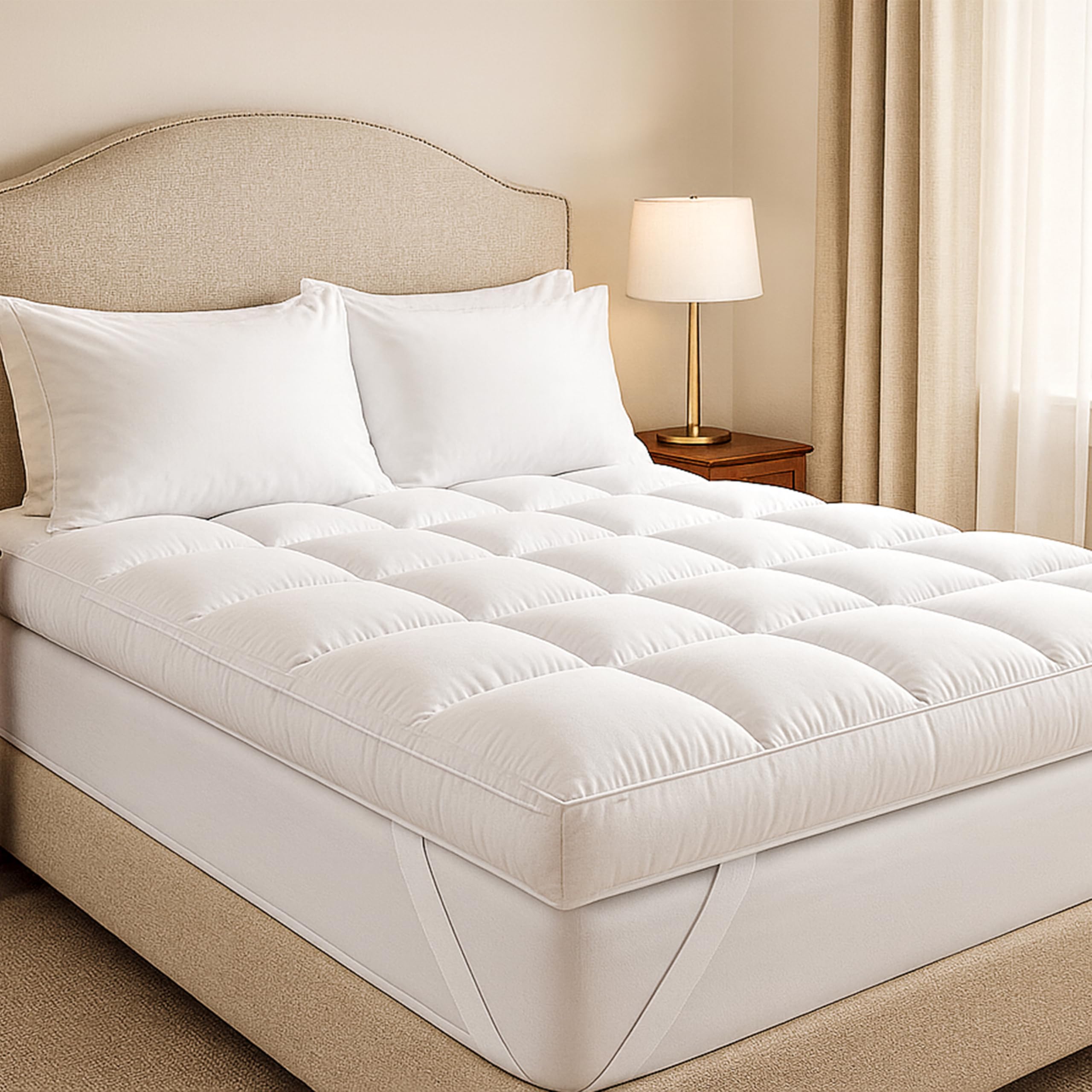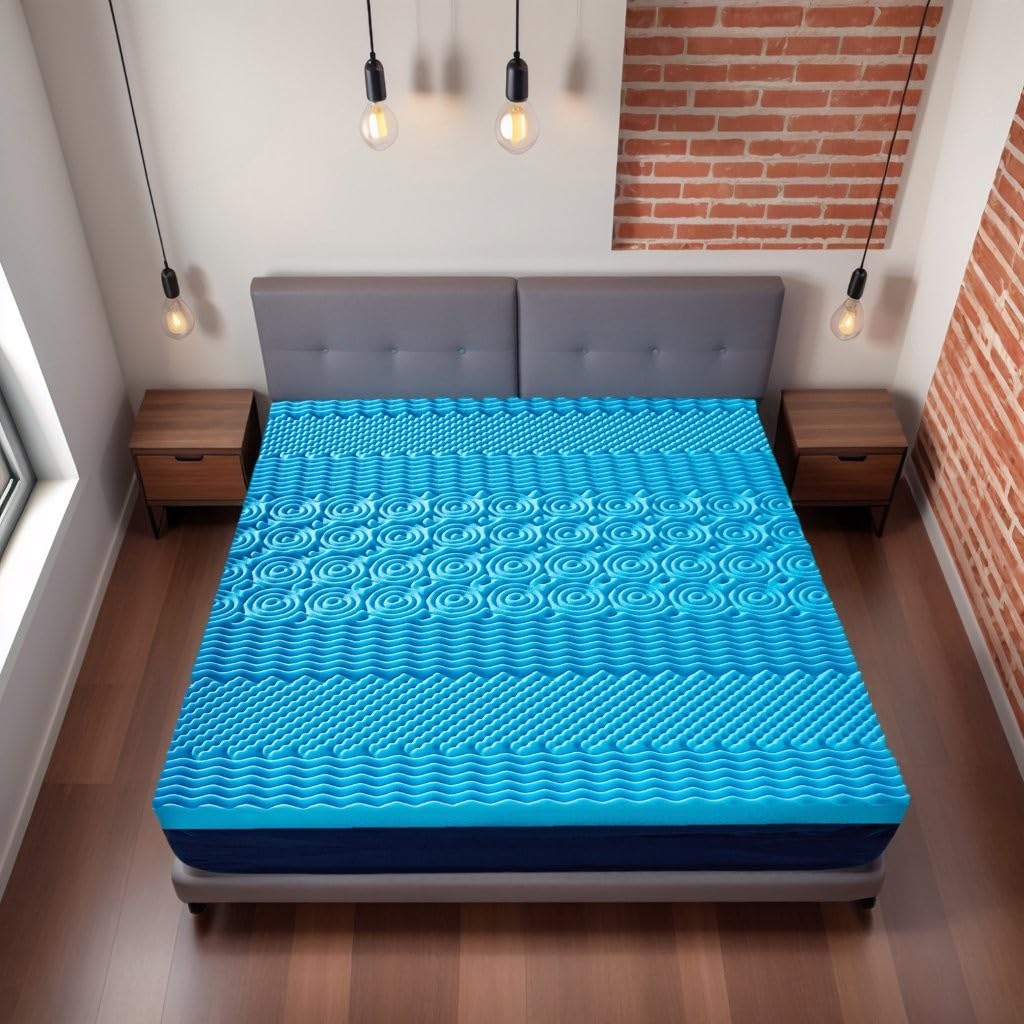Hot sleepers often pick a mattress topper to soften a firm bed and then discover that thick foam traps heat. You do not need to choose between comfort and breathability. With the right materials and a lighter hand on thickness, you can reduce pressure at shoulders and hips while keeping airflow high. This guide compares cooling topper materials, explains how covers and sheets affect temperature, and shares practical layering tips for UK bedrooms.
Surface feel changes quickly with supportive, breathable toppers.
Why beds feel hot
Heat builds when dense foams trap warm air and when covers hold moisture against skin. A thick, slow moving foam layer often feels warmer than a thinner, ventilated design. Memory foam hugs closely and can feel warmer at the contact points. Latex tends to spring back faster and allows more air to move. Breathable sheets and a season appropriate duvet help low settings feel warm enough without creating a swampy microclimate.
Cooling materials to prioritise
Natural latex and well ventilated open cell foams tend to sleep cooler than dense slabs. Fibre toppers allow air to circulate but compress more under weight, which limits support. Wool pads regulate moisture well and can feel surprisingly comfortable across seasons, though they are more about humidity control than active cooling. If you want foam pressure relief without a heat penalty, start with latex or a thinner open cell memory foam that includes channels or perforations for airflow.
Thickness and airflow
Counterintuitively, a thinner, more elastic topper can sleep cooler because air moves more easily around the body. Aim for a thickness that softens pressure without burying you in foam. Many hot sleepers find that five centimetres of latex or ventilated foam balances comfort and temperature better than a very thick slab.
Covers and fabrics that manage moisture
Look for breathable covers with cotton or bamboo blends. Tight plastic feeling covers trap heat and humidity. A removable, washable cover keeps the surface fresh and reduces odours in summer. Pair the topper with percale cotton sheets that feel crisp and cool, and choose a duvet tog that matches the season rather than using a heavy winter set all year.
Pairing with sheets, duvets, and protectors
If you add a waterproof mattress protector, pick a soft knit design with a quiet PU membrane that breathes reasonably well and fits deep corners. Some protectors feel warmer than others. A good combination is a breathable protector, a latex or ventilated foam topper, percale sheets, and a lighter duvet. This setup lets you run low settings on heated blankets without overheating.
When a topper is not the answer
If your bed feels like a sauna regardless of covers, the base mattress may be the problem. Very dense foam stacks will trap heat even with a cooler topper. In that case, adjust bedding for the season and consider a future mattress that uses more breathable comfort layers. In the short term, a lighter duvet, percale sheets, and a small fan can make the room feel cooler at night.
Care and maintenance
Keep the topper clean with a washable cover. Air the bed each morning by folding back the duvet for twenty minutes. This habit allows moisture to escape and keeps foams fresher. Rotate the topper head to toe every month so it wears evenly, especially if one sleeper runs warmer and sweats more.
We highlight supportive, cooler topper options in our guide to mattress toppers for hot sleepers. To complete a breathable setup, see our guides to cool feeling sheets and light duvets for summer nights.
FAQs
Which topper stays coolest?
Latex usually runs cooler than dense memory foam. Ventilated foams and breathable covers help. Thickness matters. A thinner, elastic topper often sleeps cooler than a very thick slab.
Will a wool topper keep me cool?
Wool regulates moisture well and reduces clammy feel. It does not feel actively cool, but many people sleep more evenly across seasons with a wool pad, especially in humid UK summers.
Do cooling gels solve heat?
Gel additives can feel cooler at first touch but do not remove body heat from the bed. Airflow and fabric choices matter more for sustained comfort through the night.
